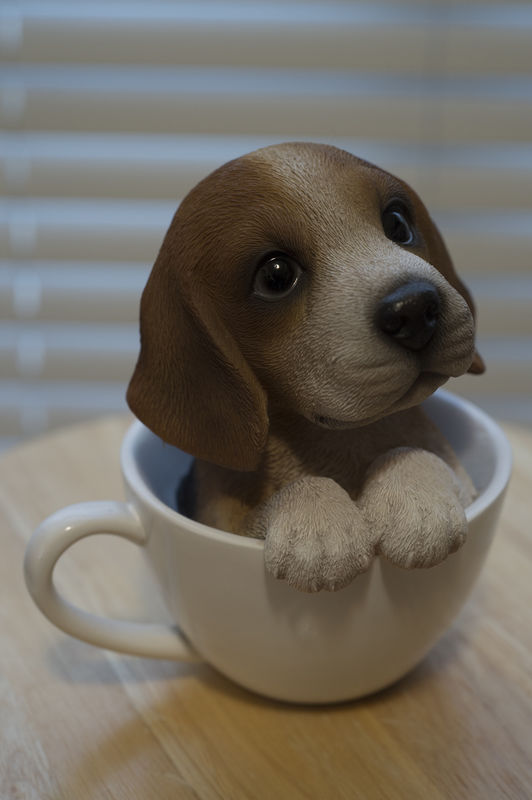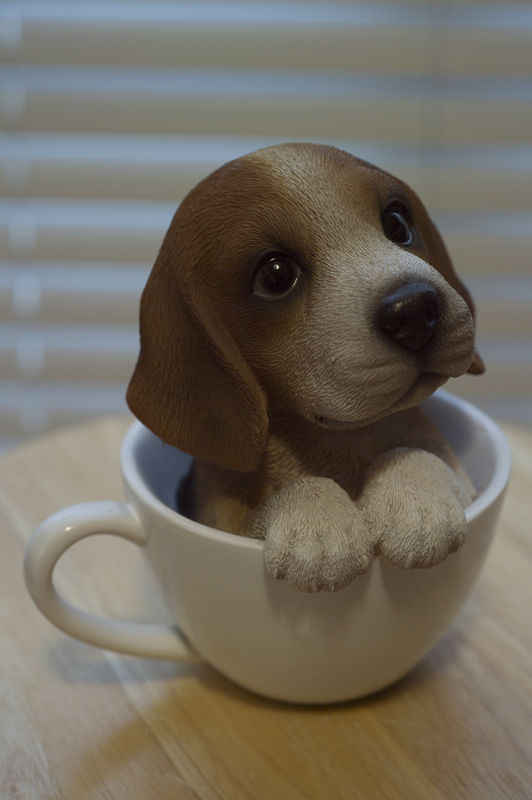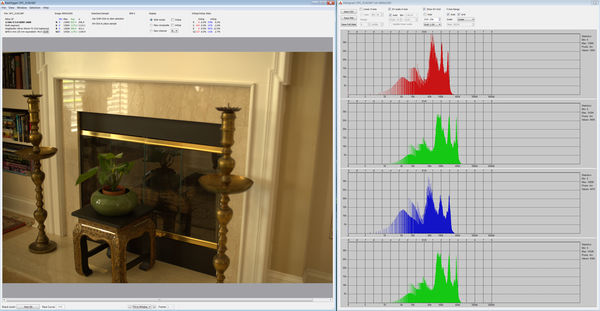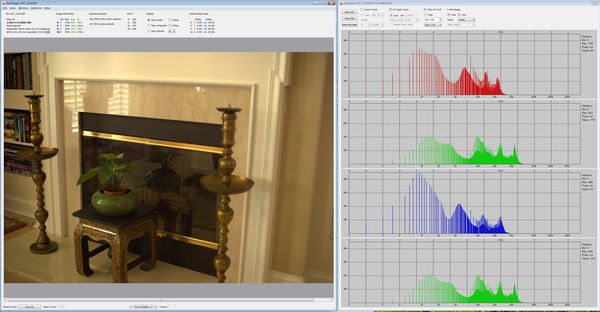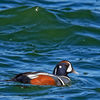ISO-less exposure
May 10, 2018 21:13:53 #
pulling the tonality up from the dark and down from the highlights tends to reduce contrast at the ends, if you do this you might try exporting as psd and using nik colorfx and the pro contrast and color contrast filters to restore contrast.
Ensure that the histogram does not spread over the edges as this loses detail.
Ensure that the histogram does not spread over the edges as this loses detail.
May 10, 2018 21:39:09 #
I did a similar test at ISO 1600 and ISO 100. Both are RAW and when converted to JPEG I have the settings on both the same except for the exposure +4 on the ISO 100 image. The ISO 100 isn't as good but not that much worse than the one at ISO 1600.
May 10, 2018 23:25:30 #
RRS wrote:
SRT, I'd continue to shoot the way you have been a... (show quote)
I am not so sure that further advances in sensor technology may not make this less of a "trick" and more of a solution to reducing noise. It certainly has changed my approach to exposure.
May 10, 2018 23:31:40 #
srt101fan wrote:
Thanks RRS; makes sense that in full Manual the &q... (show quote)
It means that in the future you can probably expect that most cameras will be ISO invariant, and having discussed the subject and done some experimentation, you all will be ready to take proper advantage of it when you need it..
May 10, 2018 23:32:24 #
BebuLamar wrote:
I did a similar test at ISO 1600 and ISO 100. Both are RAW and when converted to JPEG I have the settings on both the same except for the exposure +4 on the ISO 100 image. The ISO 100 isn't as good but not that much worse than the one at ISO 1600.
Love the puppy!
May 10, 2018 23:43:13 #
Dynamic range has improved much over the years. The Hasselblad medium format has a bit more than the D850 but I can’t see a difference.
May 10, 2018 23:50:28 #
BebuLamar wrote:
I did a similar test at ISO 1600 and ISO 100. Both are RAW and when converted to JPEG I have the settings on both the same except for the exposure +4 on the ISO 100 image. The ISO 100 isn't as good but not that much worse than the one at ISO 1600.
Very good test. I don't see any real difference between the two. The detail is equal and the noise is the same. What camera is this? And where did you find that adorable ceramic?
May 11, 2018 01:40:06 #
BebuLamar wrote:
I did a similar test at ISO 1600 and ISO 100. Both are RAW and when converted to JPEG I have the settings on both the same except for the exposure +4 on the ISO 100 image. The ISO 100 isn't as good but not that much worse than the one at ISO 1600.
I ran a test with a Df using an exposure of 1/60 @ f/2.8 at ISO 1600 and ISO 200. I was a little puzzled by the result at first since both images recorded the same S/N at the sensor but the ISO 1600 version looked slightly better.
So I brought both image up in RawDigger and the reason is clear. The ISO 200 version recorded the range of tones using numbers that were three stops lower than the ISO 1600 version. For example, the average numeric values for the green channel were around 1110 for the ISO 1600 version but about 140 for the ISO 200 version.
So what appears to be more "noise" in the ISO 100 version is due to the fact that the ISO 1600 version was able to use about 3 more bits in the raw file when the camera initially recorded the raw image.
This is another reason to get the JPEG to look closer to normal.
May 11, 2018 02:44:56 #
Rongnongno wrote:
Oh, another finally found the quality offered by an invariant sensor. This information is valid only for the latest top of the line cameras.
Been posting about this for a long time.
There is a caveat thought... Do not trust this so much that you start not caring about ISO. Also use the ISO setting that offers the best DR (hint: This is not the base ISO).
Been posting about this for a long time.
There is a caveat thought... Do not trust this so much that you start not caring about ISO. Also use the ISO setting that offers the best DR (hint: This is not the base ISO).
How does one go about identifying exactly what that is? Thanks.
May 11, 2018 07:11:55 #
CatMarley wrote:
Very good test. I don't see any real difference between the two. The detail is equal and the noise is the same. What camera is this? And where did you find that adorable ceramic?
The camera is a Nikon Df with the old Micro Nikkor 55mm f/3.5 pre AI. As for the puppy I found it on my wife's desk and I am not sure where she got it. I believe it's from the cheap Japanese store called Daiso.
May 11, 2018 08:08:30 #
Thanks for this really eye opening experiment. I tried it myself and got a similar result. But on critical examination of a small object magnified in post I see more noise in the underexposed image. I encourage you to photograph your statue from across the room to see if you get a similar result.
May 11, 2018 09:10:41 #
Tomfl101 wrote:
Thanks for this really eye opening experiment. I tried it myself and got a similar result. But on critical examination of a small object magnified in post I see more noise in the underexposed image. I encourage you to photograph your statue from across the room to see if you get a similar result.
Download my second image from my previous post and you can see why this is happening.
Look at the information in the left panel above the image. At the top under the heading "OvExp/UnExp Stats" it shows that nothing was recorded as overexposed (no surprise) but the three color channels are underexposed - Red 50.3%; Green 34.0%, Blue 60.0% and Green2 33.0%. That's about 2 million pixels each for red and blue and about 1 million pixels for each of the two greens, in other words about 6 million pixels out of the 16 MP did not record any useful exposure. I'm not sure what level they consider to be the threshold for "underexposed" but that's a significant number of pixels.
Now compare that to the ISO 1600 version, the first image. The number of pixels that are underexposed is much lower, just about 1.1 million pixels.
Despite all of this you have to look closely to see any degradation in the second image. From a distance they look the same except for the degraded color of the blacks.
May 11, 2018 09:36:08 #
tcthome
Loc: NJ
Rongnongno wrote:
Oh, another finally found the quality offered by an invariant sensor. This information is valid only for the latest top of the line cameras.
Been posting about this for a long time.
There is a caveat thought... Do not trust this so much that you start not caring about ISO. Also use the ISO setting that offers the best DR (hint: This is not the base ISO).
Been posting about this for a long time.
There is a caveat thought... Do not trust this so much that you start not caring about ISO. Also use the ISO setting that offers the best DR (hint: This is not the base ISO).
Would this require a light meter & some testting?
May 11, 2018 10:15:03 #
Tomfl101 wrote:
Thanks for this really eye opening experiment. I tried it myself and got a similar result. But on critical examination of a small object magnified in post I see more noise in the underexposed image. I encourage you to photograph your statue from across the room to see if you get a similar result.
In the tested cameras that yielded higher noise with the underexposure, what you have revealed is that analogue amplification of the signal in those cameras is less noisy than the digital amplification. Future developments of software and firmware may equalize or reverse that situation. In any case, just one more useful tool.
May 11, 2018 10:21:58 #
dsmeltz wrote:
This is why I usually use auto ISO. Auto ISO gets me in the ballpark
Usually my Nikon D7200 on auto ISO sets the ISO too high to suit my needs so I never use auto ISO. I shoot like the old slide days and reset the ISO as if I were changing film to suit my needs. I used to shoot a Bronica SQA and just changed backs although when using my old Canon 35mm I actually changed rolls of film being careful to not let the leader tuck into the film can during removal. Sold the Canon gear when everything went digital. I planned to go Nikon when I went digital. Not using auto ISO can be a distraction but when the camera decides you need 25600 when you may only need 12800 means I decide more on the amount of noise than the camera does.
If you want to reply, then register here. Registration is free and your account is created instantly, so you can post right away.


